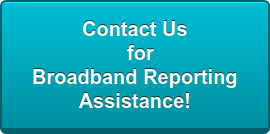 The Regulatory Mix, TMI’s daily blog of telecom related regulatory activities, is a snapshot of PUC, FCC, legislative, and occasionally court issues that our regulatory monitoring team uncovers each day. Depending on their significance, some items may be the subject of a TMI Briefing.
The Regulatory Mix, TMI’s daily blog of telecom related regulatory activities, is a snapshot of PUC, FCC, legislative, and occasionally court issues that our regulatory monitoring team uncovers each day. Depending on their significance, some items may be the subject of a TMI Briefing.
FCC
Lifeline
FCC Commissioner Ajit Pai continued to press the Universal Service Administrative Company (USAC) for more details about suspected abuses to the Lifeline program by wireless resellers. See the Regulatory Mix dated 6/10/16. In a follow up letter to USAC, Pai asked for more information about how “unscrupulous” wireless providers can avoid the safeguards of the National Lifeline Accountability Database (NLAD). In particular, he sought more information about a perceived “loophole” in the system that allows providers to receive funding for subscribers based on their Form 497 filing, not the number of subscribers enrolled in the NLAD. Pai indicated his belief that the “vast majority of the unverified or phantom subscribers” were attributable to two providers and two states (the names and states were redacted). He asked USAC to respond to an additional seven questions, including: any legitimate reason why a provider could submit a higher subscriber count on its Form 497 than in the NLAD; whether USAC can close the loopholes on its own or whether FCC action would be needed; and whether USAC has undertaken any audits or investigations undertaken since 2014 to compare carrier subscribers in the NLAD to carrier subscribers claimed on Form 497.
Spoofing
The FCC issued a Notice of Apparent Liability For Forfeiture against two men accused of using false caller ID numbers to carry out harassing phones calls to the ex-wife of one of the men. Each man faces a proposed $25,000 fine for spoofing the phone numbers of the victim’s parents, her child’s school district, Sing Sing Correctional Facility, the U.S. Postal Service, and other entities to trick the victim into answering the phone so that they could deliver harassing messages to her. The FCC’s investigation found that, using a third party spoofing service, the men made at least 31 spoofed telephone calls to the victim over the course of four months, sometimes calling multiple times a day. The Truth in Caller ID Act of 2009 and the FCC’s rules prohibit spoofing with the intent to cause harm, defraud, or wrongfully obtain anything of value. The Act and rules authorize a forfeiture of up to $10,000 for each spoofing violation, or three times that amount for each day of a continuing violation, up to a statutory maximum of $1,025,000 for any single act or failure to act. The Act also allows the FCC to assess forfeitures without first issuing a citation. The FCC has discretion to adjust a forfeiture upward for violations which, like those in this case, are egregious, intentional, repeated, or that cause substantial harm.
Minnesota
The PUC issued a notice reminding all local service providers, including non-ETCs, that they must continue to offer the Telephone Assistance Plan (TAP) whether or not they participate in the Federal Lifeline program. The notice was issued because of FCC rule changes, effective August 15, 2016, that will allow carriers to receive reimbursement for the federal Lifeline Program only where they provide Lifeline service directly to subscribers and that eliminate the obligation of ILECs to resell Lifeline Program services.
Vermont
The PSB scheduled a workshop on 8/26/16 to address the petition of the Competitive Local Exchange Carriers Association of Northern New England (CANNE). CANNE requested that the Board open a rulemaking to consider amending its rule regarding the rental calculation for pole attachments (Board Rule 3.706(D)(1)). CANNE proposes that the Board adopt the single, rebuttable presumption that the 1-foot rate apply to all attaching entities, rather than the 1-foot and 2-foot rates that the Rule currently employs. The proposal would not affect the right of a pole-owning utility to conduct a study of the space actually occupied by any particular pole attachment.






